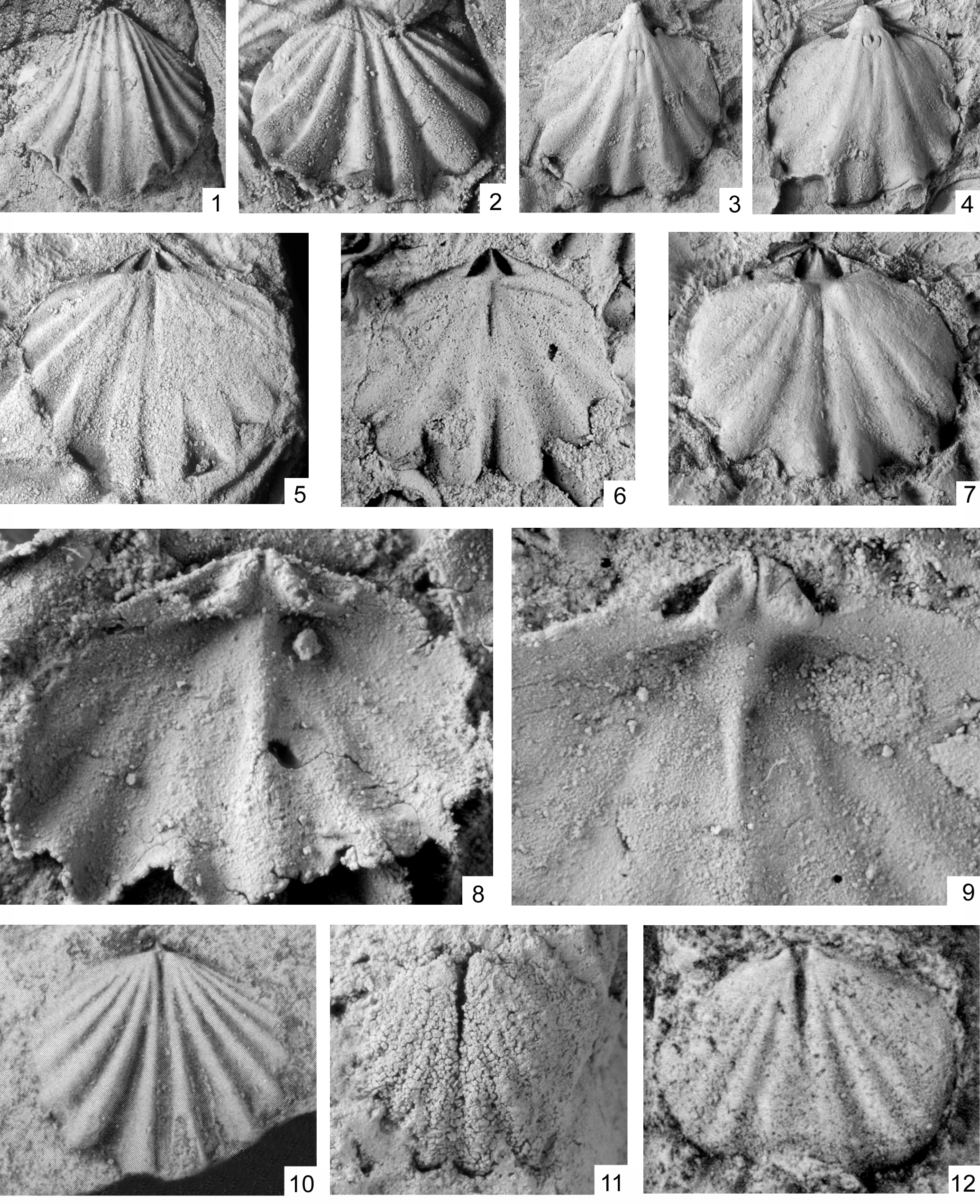PHYLOGENETIC RELATIONSHIPS OF THE SILURIAN AFRO-SOUTH AMERICAN BRACHIOPODS ANABAIA, HARRINGTONINA AND CLARKEIA: NEW INSIGHTS FROM THEIR ONTOGENY
DOI:
https://doi.org/10.13130/2039-4942/12224Abstract
Hundreds of specimens of the rhynchonellide brachiopod Clarkeia antisiensis (d’Orbigny) recovered from the stratotype of the Tarabuco Formation of Bolivia form a complete series of growth stages providing a good opportunity for reconstructing its ontogenetic development. The fact that juvenile specimens of C. antisiensis are nearly indistinguishable from adult individuals of Harringtonina australis Boucot strongly suggests that Clarkeia evolved from Harringtonina by the heterochronic process of peramorphosis. On the other hand, adult specimens of both the Brazilian Anabaia paraia Clarke and the Precordilleran specimrens of Anabaia never exceed the youngest ontogenetic stage of Harringtonina australis, to which share small hinge plates supported by a septalium-like structure and absence of cardinal process. The overlap of adult morphology of Anabaia with the juvenile morphology of Harringtonina australis allows interpreting this succession as an evolutionary lineage showing increasingly more peramorphic characters. This hypothesis is supported by the correlation between the stratigraphic record of taxa and the inferred developmental sequence being Anabaia the oldest member (Early Silurian), Harringtonina australis the intermediate form (Wenlock-Ludlow), and Clarkeia antisiensis the youngest (Pridoli). This interpretation raises a systematic problem because the leptocoeliids Anabaia and Harringtonina are currently classified within the superfamily Uncinuloidea whereas Clarkeia is placed among the Rhynchotrematoidea. If the hypothesis is proven, these superfamilies, as presently constituted, would be polyphyletic groups.
Metrics

Downloads
Published
Issue
Section
License
Copyright (c) 2019 FLORENCIA LEONE, JUAN L. BENEDETTO

This work is licensed under a Creative Commons Attribution-NonCommercial-NoDerivatives 4.0 International License.
The journal allow the author(s) to hold the copyright without restrictions.






